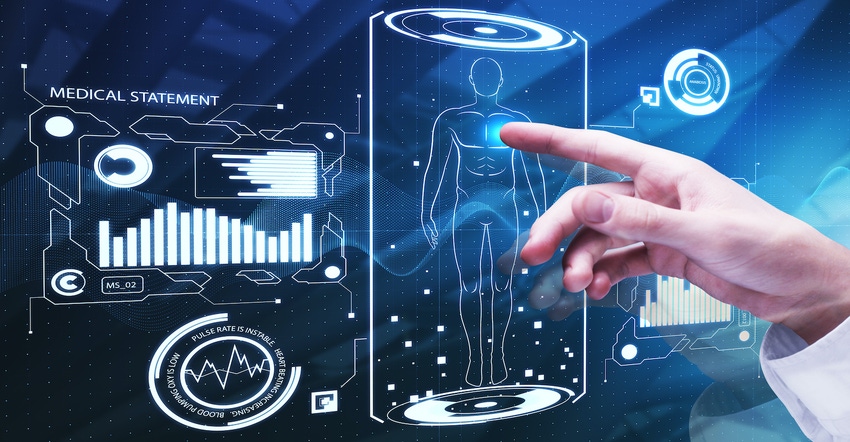Mark Wehde from the Mayo Clinic will tell all.
July 23, 2021

Healthcare has gone through some significant changes thanks to the recent pandemic. Technology has been the enabler for most of these changes, accelerating the transition from traditional hospital-centric medical care systems to more virtual care. But which of these tech changes will be longest lasting? To answer this question and others, Design News reached out to Mark Wehde, Chair, Division of Engineering, Mayo Clinic, and keynote speaker at DesignCon. He’ll deliver his complete analysis on Tuesday, August 17, 2021: “The Future of Healthcare is at the Edge.” What follows is a pre-conference DN interview.
Design News: Are our medical community and the average person ready for a more virtual, distributed type of health care?
|
Mark Wehde, Mayo Clinic, is a keynote speaker at DesignCon. |
Mark Wehde: I think that was a legitimate question before the pandemic. Even then, the answer was yes. However, our experience during the pandemic with various types of remote care has convinced both providers and patients of the utility of virtual, distributed healthcare. For most folks, there is a significant burden involved in getting to the doctor’s office. Time off from work, travel, parking, waiting, filling out forms, and finally seeing a care provider. All that becomes an order of magnitude easier via remote technology. I think there is a viable and robust business model for various preventive care and follow-up visits.
Beyond that, our ability to care for patients in their homes also brings considerable convenience to the patients and their caregivers. At Mayo Clinic, we recognize that providing home care for one means providing care for the whole family. Often the primary caregivers are family members with limited medical experience. Providing an on-demand virtual connection back to a healthcare professional for quick consultations or just-in-time training can dramatically improve the patient and caregiver experience.
Finally, providing unobtrusive ongoing remote monitoring can help keep an eye on existing health conditions. It can also help diagnose new looming health conditions early when treatment is more manageable or prevention is possible.
Design News: What technology has helped the move toward virtual care? What is still needed?
Mark Wehde: We’ve seen a dramatic increase in the use and acceptance of wearable health monitors and fitness trackers over the last few years. It used to be only the hardcore athlete that was taking advantage of these types of devices. But as they have become simpler and more accurate, they have found a broad acceptance in the market. The next advance is already happening, and that is the move to medical-grade wearable devices.
Key technologies supporting this include the dramatic decrease in the size of the electronics, improvements in display technology, the ubiquitousness of wireless communication, and the almost infinite data storage on the cloud. This has given us the ability to create incredibly complex devices in small and wearable packages.
We see the next stage in evaluating wearable technology, too, with the rapid innovation going on in the AI/ML space. We can develop algorithms with complexity and sophistication orders of magnitude above what we can do with conventional programming techniques. It is no simple matter for a human to correlate minute changes in various channels of a 12-lead ECG. Yet, we can use our tools to amplify our intelligence and pattern recognition skills to identify subtle changes that provide helpful information for the treatment and diagnosis of disease.
Design News: How will care be different in the near future?
Mark Wehde: I’m looking at the care I’m getting now, and I believe the near future is already here. Over the next few years, we should see a pretty dramatic shift in providing more or less routine care in a virtual setting. We will gradually see more and more devices that can be worn to monitor various health conditions.
In the slightly longer term, but still a near term, we will see more and more care being provided in the home that would previously have been provided in the hospital. This creates some new problems that we have to solve, such as the security and safety of patients and care providers in the home environment. It requires continued improvement in our network and wireless infrastructure to provide high-reliability communication networks, and we’ve seen those improvements coming steadily over the last decade.
To listen to Wehde’s full presentation at DesignCon, please click here.
John Blyler is a Design News senior editor, covering the electronics and advanced manufacturing spaces. With a BS in Engineering Physics and an MS in Electrical Engineering, he has years of hardware-software-network systems experience as an editor and engineer within the advanced manufacturing, IoT and semiconductor industries. John has co-authored books related to system engineering and electronics for IEEE, Wiley, and Elsevier.
About the Author(s)
You May Also Like






